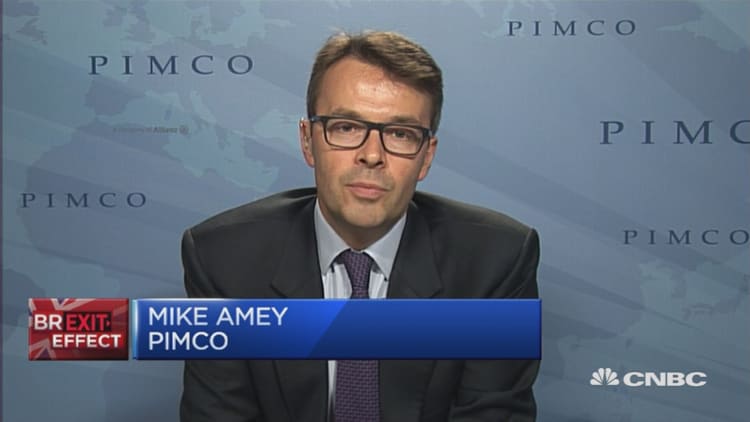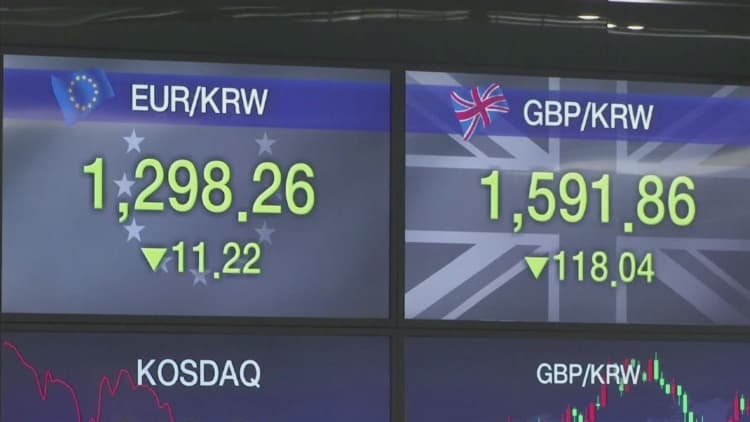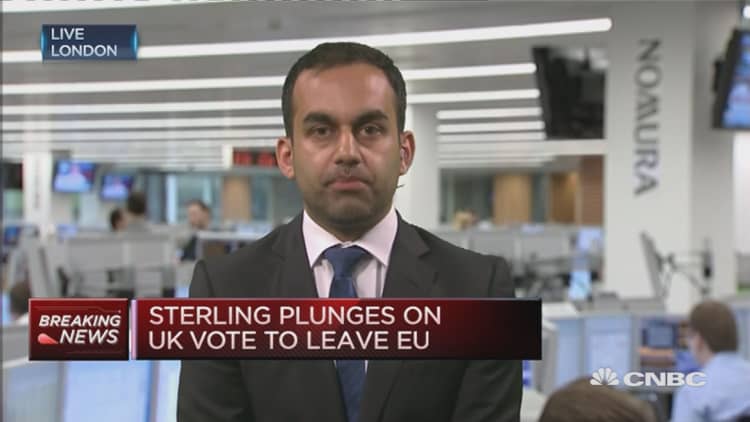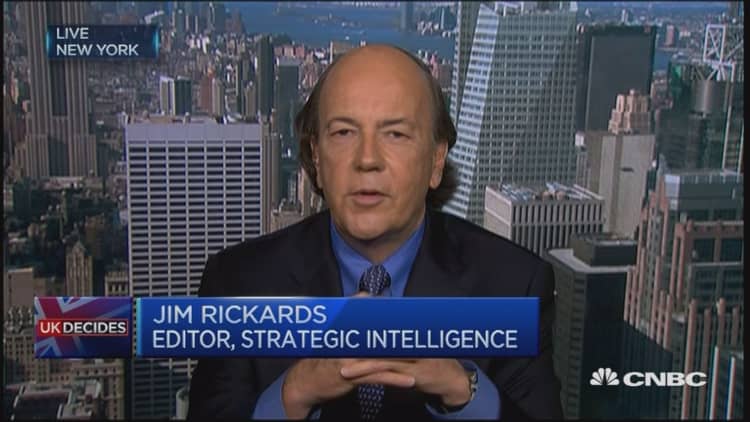




With sterling ticking slightly higher on Tuesday, analysts are contemplating whether this might be the bottom for the U.K. currency after the historic drop following the result of the Brexit referendum.
Sterling was up to 1.3347 against the greenback at 1.00 p.m. London time after starting the session at $1.3218. The euro slipped against the pound, with a price of £0.8300 after a close of £0.8340 on Monday evening.
But the bounce may prove to be a false dawn, according to some, with many technical levels and barriers being broken during its plummet Friday,
"We believe that weakness will extend gradually beyond the first shock reaction, as the fundamental data will continuously turn pound-negative," David Meier, an economist at Julius Baer, said in a research note on Tuesday.
Meier's bearish euro-pound forecast is for the single currency to rise to £0.93 over a 3-month horizon, adding that he would "not be surprised" to see parity within the next 12 months.
The British pound fell to a 31-year low against the dollar Monday, extending the dramatic fall following the shock results of Britain's European Union referendum. Sterling hit $1.3151 on Monday, its lowest level since mid-1985. Before Tuesday's bounce, it had seen an 11.5 percent fall since the day of the referendum.
The political vacuum in the U.K and the uncertainty over its future role with the EU is expected to dent foreign flows into sterling-denominated assets and lead to more stimulus for the Bank of England. Lower benchmark rates or any money printing scheme is likely to further weaken the currency.
With this in mind, a range of currency experts are expecting more pain. Hussein Sayed, a chief market strategist at forex broker FXTM, said in a note Tuesday that another 5 percent-10 percent drop from current levels can't be ruled out in the next couple of weeks.
Mike Amey, head of sterling portfolio management at PIMCO, admitted that the initial drop on Friday had been smaller than he had expected. Nonetheless, he added that current levels looked reasonable, however.
"Clearly we could go down to 1.20 or 1.25 (against the dollar). I do think it's quite important to remember that the last time we were down here was the mid-1980s and my suspicion is that we'll probably see some stability here. It's possibly getting another leg down but I think we've done basically the bulk of the move," he said.



